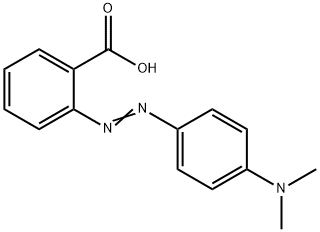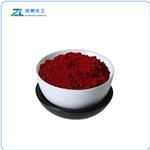Description
Methyl red is a commonly used indicator for acid-base titrations. This chemical is usually yellow but turns red below pH 4.0. Bacteria exhibiting mixed acids fermentation will accumulate acids in the medium, resulting in a color change. Approximately five drops of methyl red reagent are added to an overnight culture grown in MRVP broth to determine the test result.
Different bacteria convert dextrose and glucose to pyruvate using different metabolic pathways. Some of these pathways produce unstable acidic products which quickly convert to neutral compounds. Some organisms use the butylene glycol pathway, which produces neutral end products, including acetoin and 2,3-butanediol. Other organisms use the mixed acid pathway, which produces acidic end products such as lactic, acetic, and formic acid. These acidic end products are stable and will remain acidic.
The Methyl Red test involves adding the pH indicator methyl red to an inoculated tube of MR-VP broth. If the organism uses the mixed acid fermentation pathway and produces stable acidic end-products, the acids will overcome the buffers in the medium and produce an acidic environment in the medium. When methyl red is added, if acidic end products are present, the methyl red will stay red.
Chemical Properties
dark red crystalline powder
Uses
As indicator in 0.1% alcoholic solution; pH: 4.4 red, 6.2 yellow. Used for titrating NH3, weak organic bases, e.g., alkaloids; not suitable for organic acids, except oxalic and picric acid. Methyl red is easily reduced, thereby losing its color, and readings should be made promptly. It is gradually being replaced by sulfonphthalein indicators, such as bromcresol green, which are more stable and exhibit a sharper change in color.
Uses
Used as pH indicator.
Uses
pH indicator in pH range 4.2 - 6.3Methyl red is used as a pH indicator. It is red in pH less than 4.4 and yellow in pH over 6.2. It is used to study its degradation using Fenton's reagent. In microbiology, it is used to identify bacteria producing stable acids by mechanisms of mixed acid fermentation of glucose.
Definition
ChEBI: An azo dye consisting of benzoic acid substituted at position 2 by a 4-[(dimethylamino)phenyl]diazenyl group.
Definition
methyl red: An organic dye similarin structure and use to methyl orange.It changes from red below pH4.4 to yellow above pH 6.0 (at 25°C).
Preparation
2-Aminobenzoic acid?diazo, and N,N-dimethylaniline coupling.
Definition
An acid–base indicator that is
red in solutions below a pH of 4.2 and yellow
above a pH of 6.3. It is often used for
the same types of titration as methyl orange
but the transition range of methyl red
is nearer neutral (pH7) than that of methyl
orange. The two molecules are structurally
similar.
General Description
Methyl red solution is an azo dye which turns to red when pH is below 4.4 (yellow pH < 6.2, orange pH 4.4-6.2). Some bacteria utilize glucose to form large amounts of acid with the result that the pH value of the medium falls distinct. Other species produce no or less free acid. This difference can be visualized by using methyl red. This test is used to differentiate enteric bacteria.
Hazard
Questionable carcinogen.
Biochem/physiol Actions
Methyl Red is a maroon red crystal azo dye. Methyl Red is a pH indicator and changes color at a pH of 5.5. Methyl Red is widely used in saliva sampling method. In addition, it is also employed in carbohydrate and lactic acid detection. Methyl Red has been effectively used for intrageneric differentiation of Enterobacteriaceae.
Safety Profile
Questionable
carcinogen with experimental tumorigenic
data. Mutation data reported. When heated
to decomposition it emits toxic fumes of
NOx.
Purification Methods
The acid is extracted with boiling toluene using a Soxhlet apparatus. The crystals which separate on slow cooling to room temperature are filtered off, washed with a little toluene and recrystallised from glacial acetic acid, *benzene or toluene followed by pyridine/water. Alternatively, dissolve it in aqueous 5% NaHCO3 solution, and precipitate it from a hot solution by dropwise addition of aqueous HCl. Repeat this until the extinction coefficients do not increase. [Beilstein 16 IV 504.]
Properties and Applications
moderate soluble in ethanol, insoluble in water. Alcohol solution to join hydrochloric acid for purple; Add sodium hydroxide to dim yellow.






